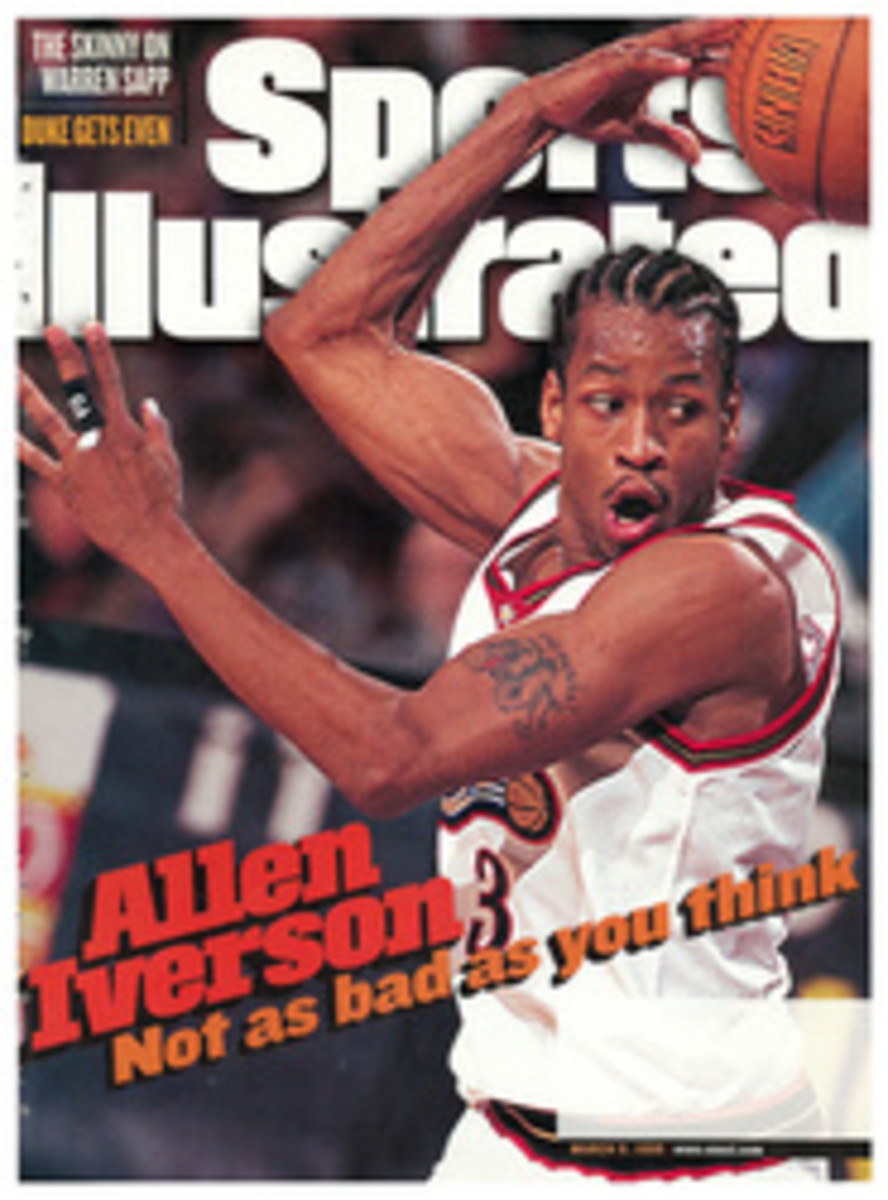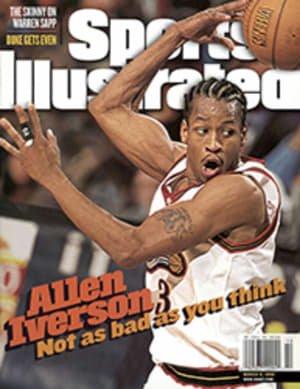
A Man Who Runs Like a Child Overcoming the effects of a horrific accident taught miler Paul McMullen to race for joy
A man with childlike hobbies, miler Paul McMullen built a snowman
this winter in his front yard in Ypsilanti, Mich. In truth, it
was more of a snow giant, 11 feet tall, with sticks for arms,
eyes made out of coal and a five-gallon bucket of snow for a top
hat. "I just about gave myself a hernia getting that up there,"
he says with a laugh. People came from all over the neighborhood
to have their picture taken beside McMullen's behemoth. After
the snow had melted everywhere else in town, that giant snowman
was still standing.
In his still blossoming career as a miler, the 26-year-old
McMullen has demonstrated a similar stubborn refusal to
disappear. After winning the 1,500 at both the 1995 national
championships and the '96 Olympic trials, he cut off most of his
second and third toe on his right foot while mowing a neighbor's
lawn just weeks before the 1997 nationals. (Mowing grass to
relax is another McMullen pastime; he volunteered to trim untidy
lawns while racing in England, France and even Atlanta during
the Olympics.) He spent last fall learning to run again, finding
ways to compensate for the lost power and balance. He has done
this amazingly well, finishing second in the mile to Laban
Rotich of Kenya on Feb. 13 at the Millrose Games in 3:57.46.
Last Saturday afternoon, as he went to the starting line for the
mile in the USA Indoor Track and Field Championships at the
Georgia Dome in Atlanta, McMullen was bent on achieving two
things: He wanted to improve his personal best of 3:56.63, and
he really wanted to beat Steve Holman, America's fastest active
miler.
A competitive race between the two was something the sport
desperately needed. With Carl Lewis retired and Jackie
Joyner-Kersee almost gone, track and field in the U.S. is in the
midst of a major changing of the guard. Craig Masback, the new
CEO of USA Track & Field, took pains to describe the Atlanta
meet as a showcase for the next generation of American stars. He
found one in willowy high jumper Tisha Waller, who sailed over
6'7" on her third try to break Coleen Sommer's 16-year-old U.S.
indoor record by a quarter inch. Waller, whose endless legs and
close-cropped hair make her look like a Giacometti sculpture
come to life, has no interest in being a full-time athlete. She
teaches fifth grade at Livsey Elementary in suburban Atlanta and
last year was named the school's teacher of the year. "On school
days I go nonstop from seven in the morning to seven at night,
eat dinner and fall asleep," she says. "But I teach my kids
about this all the time: It's what you call making sacrifices."
But as captivating a performer as Waller is, Masback knows that
track fans have a special affection for the mile, and he would
dearly love to find an American runner the likes of Jim Ryun in
the '60s, Marty Liquori in the '70s or Steve Scott in the '80s.
No such star has emerged in the '90s; in fact, U.S. milers have
actually regressed. No American runner reached the final of the
men's 1,500 at the last Olympics or world championships. Scott's
U.S. outdoor mile mark of 3:47.69 has stood for almost 16 years,
and no one has looked capable of even getting close to it.
McMullen is an intriguing contender, and he's already a local
hero. On July 4, 1996, soon after he'd won the Olympic trials,
he invited the 12,000 residents of Cadillac, Mich., to watch him
work out on the high school track. It was a blustery day, but
5,000 people showed up, forming a human wall around the track
that shielded him from the wind and chanting, "Go, Paul, go!" as
he ran. With his broad shoulders, strong jaw and wavy dark hair,
he looks like the star of a '50s beach movie or the football
player he once was. At Cadillac High he was a tight end and
strong safety who relished making hard tackles. Though a tad
less aggressive now, he contends that money has made U.S.
runners soft. "It can distort your work ethic," insists
McMullen, who sounds at times like a Marine sergeant, at others
like a New Age philosopher. "A lot of runners travel to where
it's warm in the winter. I stay in Ypsilanti, where it's cold.
I've trained when it was 22 below. I think it builds character.
My body goes through the rigors of the seasons, and when the
weather warms up, I'm in sync with nature."
The mile was the most highly anticipated race of the meet, with
McMullen facing Holman, the top-ranked U.S. miler, with whom
he's nurtured a prickly rivalry over the years. At the 1996
Olympic trials McMullen appeared to go out of his way to stare
Holman down. After Holman finished 13th in the final, McMullen's
wife, Jill, called him a "choker."
The race in Atlanta was their first championship showdown, with
the winner almost certain to take on the bothersome mantle of
America's Next Great Miler. At the gun Holman sprinted wide up
the banked turn to grab the lead, and the pair soon opened 10
yards on the field. With McMullen looming over his shoulder,
Holman ran the first half mile in 1:56.7.
"They are a study in contrasts," says half-miler Rich Kenah,
Holman's college roommate at Georgetown. "Paul feeds on emotion,
while Steve is the introverted thinker."
Holman has always been one of the sport's more cerebral souls, a
student of politics and history who sometimes chooses his words
so carefully you want to jump in and help him finish his
sentence. He sometimes seems trapped in his own mind. "Steve
gets strength from being introverted, but it also can hurt him,"
says Kenah. "He has no outlet, and the pressure gets greater and
greater."
Despite being the fastest U.S. miler in each of the past four
years, with a best of 3:50.40, Holman has crumbled again and
again at the national championships, hampered by injury, illness
or self-applied pressure. At times it has been painful to watch
as he struggles to run as well in the U.S. championships as he
invariably does on the European circuit. "For a while it was
something I was ashamed of," says Holman, who has been
consulting a sports psychologist. "But everyone has struggles.
It's how you deal with them."
On this day Holman ran as if determined to finally put his
demons behind him. For six laps McMullen ran with his eyes fixed
on Holman's number, but with just over a lap to go, he pounced.
"When I took off, I really tried to dig in," McMullen says. "I
wanted to send a message that I wasn't coming back." He pulled
away down the homestretch to win in 3:55.84. Richie Boulet
finished second in 3:56.85, with Holman fading to third, in
3:59.27.
McMullen set off on an ecstatic victory lap and even executed a
wobbly cartwheel. Later, while signing autographs, he spoke of
his newfound, almost childlike enthusiasm. "The accident
rearranged my priorities," he said, "Racing's no longer a
life-or-death situation. I can run effortlessly, like the
Kenyans do. There's no weight on my mind. It's fun again, like
it was in high school." He also went out of his way to call
Holman America's best miler. "There's been a mellowing of my
killer instinct," he said, "and it's probably better for the
sport. Let's leave that stuff to the boxers and football
players. Runners are more reserved. It fits the sport better."
In truth, the two could learn from each other. McMullen must run
faster and Holman must run tougher if either hopes to have a
chance this summer, when they face the Africans, who have both
speed and toughness in abundance.
COLOR PHOTO: BILL FRAKES After winning the '96 Olympic trials, McMullen cut off two toes mowing a lawn. [Paul McMullen running]
COLOR PHOTO: BILL FRAKES CLEAR! Atlanta schoolteacher Waller set a U.S. women's indoor high-jump record at 6'7". [Tisha Waller high-jumping]
Holman ran as if determined to finally put his demons behind him.

